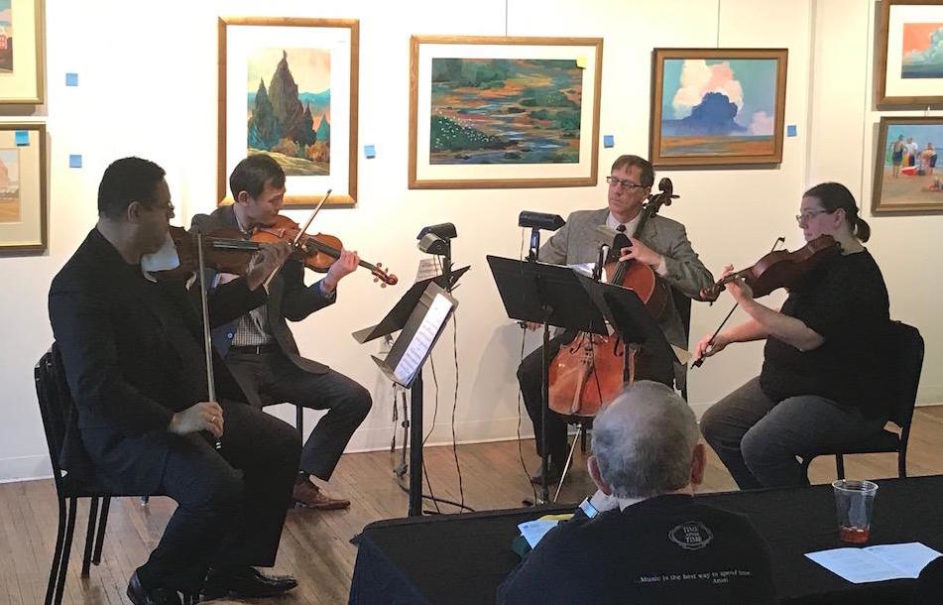The downstairs gallery at The Emporium Center for Arts and Culture on Gay Street warmed up quickly at Wednesday’s KSO Q Series concert when principal bassoonist Aaron Apaza and principal cellist Andy Bryenton began to play Mozart’s 1775 “Sonata for Bassoon and Cello in B Flat Major,” K. 292
The bassoon has a distinctive voice that’s impossible to ignore. There’s something about the instrument that exhibits a dry sense of wit, as though it’s about to say something funny. Composers give the bassoon a wide range of emotional responsibilities from solemnity, majesty and dignity to melancholy, mysteriousness and eeriness.
In Apaza’s superb playing, Mozart explores most of the bassoon’s versatility and range of humor and cheerfulness in the jaunty first movement, which ends on a note of anticipation.
In the middle movement, both Apaza’s bassoon and Bryenton’s cello slowed down enough for endearing singing lines. Then in the “Rondo Allegro,” third movement, both instruments had lines that twirled in tight little circles as the music skipped along.
Principal flute Hannah Hammel played two of her favorite pieces for solo flute: French composer Jacques Ibert’s 1937 “Piéce” and fellow Frenchman Eugène Bozza’s 1940 “Image,” Op. 38.
Written in the context of World War II, when Ibert retreated to a more stable period by writing music closer to a neoclassical mode, “Piéce” was written as an encore piece for the great French flutist Marcel Moyse. Hammel played it beautifully, especially the moments when images of Debussy’s music came into focus.
In more than one sense, Bozza’s “Image” is a larger, more complicated version of “Piéce.” Hammel was brilliant on both pieces.
The two outer sections of “Image” gave Hammel a chance to show her virtuosic technical skills with their fast, demanding passages, while the slower, middle section of the piece gave her flute the opportunity to sing.
After a break, the KSO Principal Quartet, composed of violinists Gordon Tsai and Edward Pulgar, violist Kathryn Gawne and cellist Bryenton, played Brazilian composer Heitor Villa-Lobos’ “String Quartet No. 1,” written in 1915 but extensively revised in 1946.
Composed in six movements that alternate between singing and dancing styles, it began in a lovely singing mood that was moderately slow and gave the string instruments the chance to show off all four players’ gorgeous tones.
The second movement, “Brincadeira” (“A Joke”), was light and humorous with the instruments tiptoeing on pizzicato, plucked strings and slightly silly movements of whacking the strings with the backs of the bows.
After more appealing singing by all four, the third movement gave Gawne’s viola and Pulgar’s violin the chance to pretend being romantic while the cello played slow arpeggios.
The fifth movement, “Melancolia,” had the sensibility of Villa-Lobos’ “Bachianas Brasileiras No. 2” with the violin singing the wordless melody Villa-Lobos wrote for the soprano voice.
The quartet ended with a movement titled “Saltando como un Saci (“Jumping Like a Jumping Bean”), a happy, skipping section filled with delight.
More about the Knoxville Symphony Orchestra and upcoming performances by its musicians and the full orchestra can be found here.

